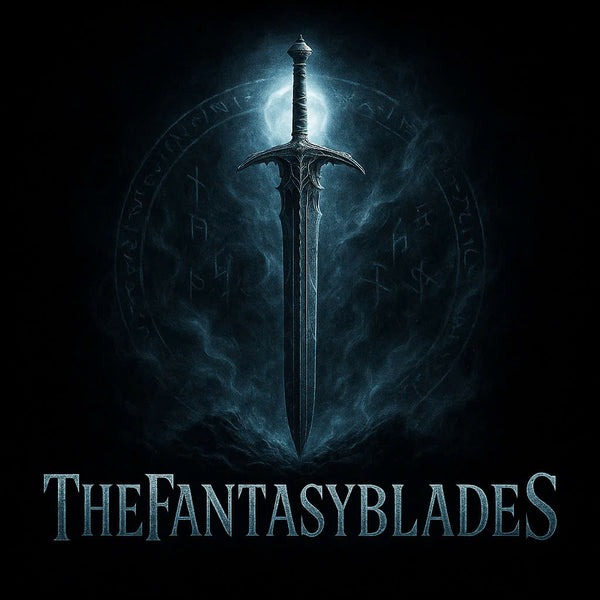
Behind the Blade: The Handmade Process of Crafting Cosplay Swords
TheFantasyBladesAt TheFantasyBlades, we believe that every cosplay sword is more than just a prop — it’s a statement of fandom, craftsmanship, and individuality. Whether you're a beginner or a seasoned collector, this behind-the-scenes guide will walk you through how a handmade cosplay sword is created from sketch to showcase.

1. Concept & Design
Everything begins with inspiration — often from iconic video game characters, anime warriors, or legendary weapons.
-
Artists draft sketches or use 3D modeling software to capture accurate dimensions, blade curves, guard details, and handle proportions.
-
It’s important to balance aesthetics with functionality — especially if the sword will be used for display or cosplay events.
2. Choosing Materials
Depending on budget, purpose, and detail, makers use different materials:
-
EVA foam – Lightweight, easy to shape, great for beginners and safe for conventions.
-
PVC pipes or wooden dowels – Used as the inner core to provide rigidity.
-
Hot glue or contact cement – For clean, secure bonding.
-
Acrylic paints & metallic spray paints – To give the sword its signature shine.
-
Optional: LED lights, faux leather, resin jewels for enhanced realism.
3. Shaping the Blade
-
Sword outlines are transferred onto EVA foam sheets and carefully cut out using sharp blades or a hot wire cutter.
-
Sanding tools (like a Dremel or sanding blocks) are used to smooth out the edges and bevel the blade.
-
Multiple foam layers are bonded to create depth or specific detailing, such as blood grooves or spine ridges.
4. Assembly & Reinforcement
-
A central dowel or PVC pipe is inserted inside the foam to strengthen the sword and maintain straight alignment.
-
All pieces — blade, guard, hilt — are glued together carefully.
-
Weight distribution is tested for balance, especially if the sword will be wielded.
5. Painting & Detailing
-
Primer is applied to seal the foam before painting.
-
Metallic spray paints give the blade a realistic steel-like finish.
-
Fine brushes or weathering techniques add shadows, wear, and depth to make the sword look battle-worn or enchanted.
-
For high-end replicas, LED lights may be wired into the blade for a glowing effect.
6. Grip, Guard & Accessories
-
The grip is wrapped with faux leather strips or rope to enhance both comfort and aesthetics.
-
Details like runes, insignias, or ornamental gems are added using sculpted foam or resin molds.
-
Makers may also craft custom sheaths or mounts for display purposes.
7. Finishing Touches
-
A protective top coat (clear sealant) is sprayed to protect paint and prevent wear.
-
Quality control checks ensure edges are clean, joints are secure, and nothing is peeling or cracked.
-
The final piece is then ready for delivery — whether to a collector, cosplayer, or for showcase.
🔧 Pro Tips
-
EVA foam is safe and ideal for conventions with prop restrictions.
-
A balanced sword improves the feel during photoshoots or performances.
-
Weathering and layered painting can add dramatic realism.
-
Don’t hesitate to experiment with LEDs or glow paints for epic visual effects.
📦 Want a Custom Sword?
At TheFantasyBlades, we offer custom sword crafting, special requests, and unique detailing. Whether you're bringing a game weapon to life or designing something original — we’re ready to forge your dream piece.
📧 Contact us: hello@thefantasyblades.com
📣 Call to Action
Enjoyed this article? Share it with fellow cosplayers, and let us know in the comments if you want more tutorials — like LED sword builds, custom sheaths, or display techniques. Your fantasy weapon deserves to shine!



